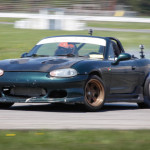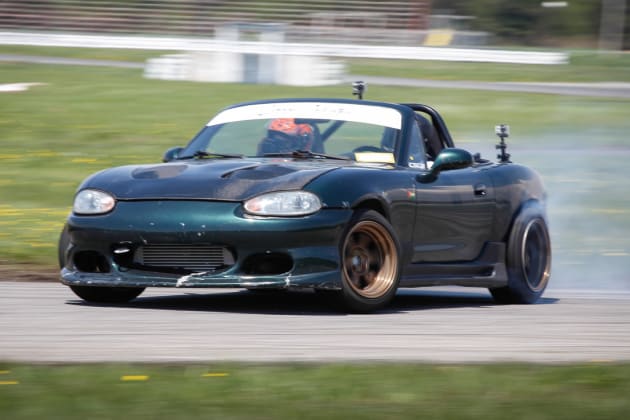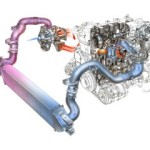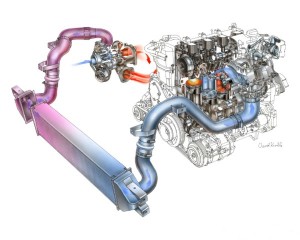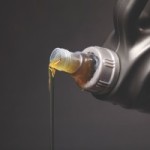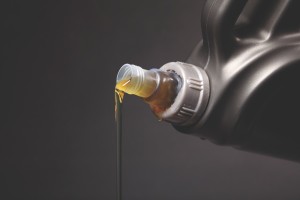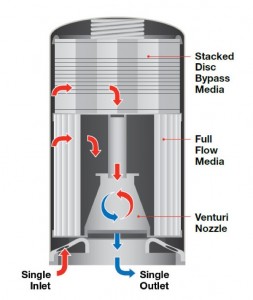Topp Drift 2014: Round 2 Highlights, Photos & Video
Filed under:
It was quite a good turnout at Shannonville Motorsport Park for Topp Drift Round 2. Everything from Fox body Mustangs to the ever so loved Nissan 240sx were in attendance and ready to leave tire marks all over the Nelson Section of the track. The great thing about drifting events like this, is that you don’t really need much to go out to the track and have fun. As long as your car is rear-wheel-drive, it runs, and is properly put together (not falling apart half way down the main straight) then you’ve covered the very bare minimum requirements you need to be able to slide around a corner or two… or 12.
All in all, we had a great time covering the event (and participating, since our very own Autoblog Canada hoonigan, Ronnie Fung was out there mashing throttle and pulling e-brake in his Hyundai Genesis Coupe) and watching all the drivers push their cars to the limit, but most of all, having fun.
Click here to check out the full photo gallery and this video clip to get a better idea of the madness that went on.
Topp Drift 2014: Round 2 Highlights, Photos & Video
Topp Drift 2014: Round 2 Highlights, Photos & Video originally appeared on Autoblog Canada on Thu, 22 May 2014 18:00:00 EST. Please see our terms for use of feeds.
Permalink | Email this | Comments
Read more here: Canadian Automotive News
Samsung plays nice with Google by shutting down its own music service
In 2012, Samsung launched the Music Hub, which combined features from iTunes, Spotify and Pandora. The Hub has since expanded to include videos, eBooks and apps, and it comes preinstalled on Samsung phones. In other words, it was pretty clearly a Google Play competitor.
Google has recently been pressuring Samsung to tone down its Android customizations and to cut back on its bloatware, and last week, Samsung’s Marketing Manager for Technical Media Philip Berne tweeted that “Samsung Hub is going away,” a tweet which has since been deleted.
Read more here: Boy Genius Report
Former Apple designer debunks some of the most infamous Apple myths
Thanks to the endless praise and the legendary pedigree, many of us have forgotten that at the end of every work day, Apple is indeed just another technology company. An incredibly impressive one, yes, but one that is often put on a pedestal that exists outside of reality. Fast Company is helping ground our expectations by putting four of the most common myths to bed in an interview with Mark Kawano, an ex-Apple designer who spent seven years in Apple’s design studios.
Read more here: Boy Genius Report
This iWatch concept almost puts an iPhone on your wrist
A new iWatch concept video imagines Apple’s upcoming smartwatch as a slim wearable gadget that would feature a large, flexible, touchscreen display ready to offer users access to many default iOS features. In fact, considering the size of the device, such an iWatch could perform many iPhone functions, including texting, although there isn’t support for a Phone app.
Read more here: Boy Genius Report
Windows 9 and other key unreleased Microsoft products detailed in new leak
A new leaked image that includes information about future Microsoft Windows and Office versions lists several products including Windows 9, Windows 365, Windows Phone 9, Office 365 and Office Gemini, as well as details about release dates and features.
Read more here: Boy Genius Report
Leaked video shows us the most secure version of BBM ever created
Earlier this year, BlackBerry announced plans to release a new messaging service called BBM Protected that the company billed as an even more secure version of its popular messaging app. CrackBerry draws our attention to a new set of videos that it’s posted on YouTube showing a live demonstration of BBM Protected that gives us an idea of how it will deliver even better security than standard BBM. One of the ways that BBM Protected will keep your messages more secure is by encrypting every individual message you send and receive with a random key, which means that even if one of your messages gets compromised somehow, the hacker still won’t be able to access all of them because they’ll have different keys. Be sure to check out both videos showing off BBM Protected below.
Read more here: Boy Genius Report
Ridge Ream Removable on a Small Block Chevy
How to remove ridge for installation of new piston rings on a Small Block Chevy.
The post Ridge Ream Removable on a Small Block Chevy appeared first on Engine Builder Magazine.
Read more here: Engine Builder Magazine
Turbochargers: Small Engine Performance Future
Turbochargers are making a comeback, big time! Auto makers are under pressure from the government to boost their Corporate Average Fuel Economy (CAFE) numbers to over 40 mpg by 2021. One of the ways they are going to accomplish this is to downsize engines and add turbochargers to boost performance so smaller engines can still deliver satisfactory power and acceleration. Downsizing engines not only reduces fuel consumption but also reduces carbon dioxide (CO2) emissions (which is important in reducing the impact of carbon emissions on global warming and climate change).
According to some projections, up to 90% of cars and light trucks in the U.S. may be turbocharged a decade from now. Nearly 16% of all new 2013 model year passenger cars’ engines were factory equipped with some type of forced induction system (turbo or supercharger). In Europe, turbos are already used on about 60% of vehicles. Most of these are small turbo diesel engines, but a growing number are also turbocharged gasoline engines. If we are headed in the same direction, it will be a significant change from the types of power plants the auto makers have been building for the past several decades.
Among the domestic auto makers, Ford is leading the charge with its ever-expanding line of EcoBoost engines. (See illustration above). Ford’s 2014 lineup includes a Fiesta with a tiny 1.0L three-cylinder turbo that delivers over 40 mpg on the highway, also a 2.0L turbo Fiesta ST (32 mpg highway), three different turbo options for the Fusion (1.5L, 1.6L and 2.0L), a new 365 horsepower twin-turbo V6 for the F150 pickup, turbo 3.5L engines in the Taurus Police Interceptor, Explorer Sport, Lincoln MKS and MKT, and a new 305 horsepower turbo 2.3L for the 2015 Mustang.
GM is also moving in the same direction with its direct injection Ecotech engine line (some of which are turbocharged and some are not). GM’s newest Ecotech turbo offerings include a turbocharged 1.0L three-cylinder engine with direct injection for the European market, and a turbocharged 1.4L four-cylinder engine for the Chevy Cruze in China. GM’s highly rated 272-hp 2.0L turbo four that delivers 31 mpg highway continues for 2014 in the Buick Regal GS, Cadillac ATS and Chevy Malibu LTZ. There’s also a turbo four available in the Chevy Cruze as well as a turbo diesel engine option.
Not all of GM’s turbos are strictly for fuel economy. The 2014 Cadillac CTS and XTS are available with an optional twin-turbo direct injected 3.6L V6. It’s GM’s most powerful production V6, producing 420 hp and 430 lb.-ft. of torque with 12 lbs. of boost. Fuel economy is rated at 25 mpg highway, which isn’t bad for an engine that can accelerate either car from 0 to 60 mph as fast as a Mustang GT (4.6 seconds).
Turbos are making a comeback at Chrysler, too. Chrysler built a slew of turbo 2.2L and 2.5L engines back in the 1980s and 1990s. In recent years, they had the Neon SRT, Crossfire SRT and PT Cruiser turbo models, followed by a 2.4L turbo Dodge Caliber SRT4. Chrysler also has a turbo four available in its Dodge Dart SRT4, and is developing single and twin turbo variants of a 3.0L V6 for possible introduction in model year 2015 or 2016. The single turbo engine may eventually replace the current 5.8L Hemi V8 in some applications (sorry Hemi fans).
Import automakers are also looking at more turbo options beyond existing performance models such as the Nissan GTR, Subaru WRX, Mitsubishi EVO, Mazda Speed3, plus various BMW, Porsche and VW models, etc. Like the domestic automakers, every car company will have to make a variety of changes to improve their CAFE numbers in the years ahead. Hybrids are one way to go, but turbocharged clean diesels are less expensive than hybrids and give a faster payback. More passenger car diesels are being offered (Jeep and Chevy Cruze), but downsized turbocharged gasoline engines are still considered the most economical way to realize a significant improvement in fuel economy by many automakers.
The typical downsized turbocharged gasoline engine is about 20% more fuel efficient than a naturally aspirated gasoline engine with equivalent power output. A turbocharged diesel engine is up to 40% more efficient than a naturally aspirated gasoline engine.
How Much Power?
The average car only needs about 20 to 30 horsepower to travel down the highway. Extra power is really only necessary when accelerating, merging onto an expressway, passing, climbing a hill or carrying extra weight. This kind of power can be easily provided by a downsized engine with a turbocharger.
Hanging a turbo on a small engine allows a little engine to breathe big. With only 6 to 8 pounds of boost pressure, a turbo can increase power output 15 to 25% or more over a naturally aspirated engine. Consequently, a turbo four cylinder engine be used in place of a larger V6, and a turbo V6 can replace a larger V8 with no loss of performance. Eventually, we’ll see turbocharged three-cylinder engines replacing many four-cylinder engines.
A turbo is exhaust driven and draws no power from the engine as a belt-driven supercharger does. Superchargers can deliver right-now boost at low RPM, but the trade-off is a constant drain on the engine when the extra boost pressure isn’t needed.
A turbo, on the other hand, is just along for the ride and doesn’t develop any boost pressure until the throttle opens and exhaust flow increases. It then spools up and starts pushing more air into the engine. Turbos can rev up to 200,000 RPM or higher, but it can take a few seconds to reach such speeds.
Because of this, engineers design turbo systems so they can reach maximum boost pressure with minimum lag. Using a relatively small turbo allows it to spool up much more quickly and reach higher speeds. Some of the newest turbos are now revving to over 250,000 RPM!
Proper sizing of the turbo is essential to reduce lag. A smaller turbo will spool up more quickly at low engine speeds than a larger turbo, but a large turbo flows more air and develops more boost pressure and power. Since the emphasis now is more on fuel economy than all-out performance, most of the new passenger car turbo engines are equipped with relatively small turbos that deliver just enough boost to offset the smaller displacement of the engine.
Some “variable geometry” turbochargers (also called “variable nozzle” or “variable vane” turbos) have movable vanes that change the “aspect ratio” of the turbo. Aspect ratio is the relationship between the size of the turbo and how much air it flows at various speeds. A turbo with a smaller aspect ratio will spool up faster and deliver more boost at low RPM but may not flow enough air at high RPM. A turbo with a large aspect ratio will flow lots of air and deliver lots of boost at high RPM but will be slow to spool up at low RPM.
Using movable vanes to change the effective aspect ratio of the turbo means the turbo will perform better across a wider range of engine speeds. Closing the vanes at low RPM increases exhaust velocity and spins the turbo faster. Opening the vanes at higher RPMs allows the turbo to flow more air and make more power.
Boost pressure is controlled by a “wastegate.” The wastegate valve opens a bypass circuit that controls how quickly boost pressure builds. It also limits peak boost pressure so the engine doesn’t go into detonation. Too much boost pressure can destroy an engine that isn’t designed to handle it. The operation of the wastegate is controlled by the Powertrain Control Module (PCM), so it is possible to tweak the turbo’s output by reprogramming the PCM.
The boost strategy on most late model engines is to develop boost as quickly as possible and to maintain peak torque output across a broad RPM range. The resulting power curve is much flatter than a comparable non-turbocharged engine, which typically rises in direct proportion to engine speed and peaks out around 5000 to 5500 RPM before dropping off. The boost pressure created by a turbo can bring the power curve up quickly by 2500 RPM and keep it relatively flat all the way to the engine’s redline.
The Cadillac Twin-Turbo 3.6L V6 is a power-dense six-cylinder engine in the midsize luxury segment – producing 420hp and 583 (430 lb-ft) of torque at 2,500 RPM.
Turbo Tweaks
Aftermarket “tuner” scan tools have been a popular toy for reprogramming turbocharged engines as well as non-turbo engines. Most of these tools provide one of several different calibrations that alter the stock fuel mixture, ignition timing, boost pressure and rev limiter settings. Some tools allow the user to play around with the settings (which can be dangerous if you don’t know what you’re doing), while others provide one of several preprogrammed performance tunes. Most of the tool suppliers can also provide custom tunes based on other engine modifications that have been made (such as exhaust system modifications, different cam, heads, induction system, throttle body, etc.).
A word of caution regarding the use of tuner tools on diesel pickup truck engines – Many of these tools can provide an extra 100 to 150 horsepower for towing, pulling or showing off. Even so, GM recently announced that it will NOT honor engine or drivetrain warranty claims on trucks that have been modified with a performance tuner. GM says its engines are designed for a specific amount of turbo boost pressure, and that increasing boost may result in engine or drivetrain damage. A modified tune can always be returned back to the stock settings, but doing so leaves telltales in the PCM that a dealer can check to see if the PCM tune has been changed.
Dialing up the boost pressure is a quick and easy way to increase power in any turbo engine – up to a point. The stock fuel injectors in many diesel engines can safely handle higher boost pressures but that’s usually not the case with gasoline engines.
The flow capacity of the stock injectors in a gas engine can quickly max out if turbo boost is increased more than a few pounds beyond stock levels. This may cause the fuel mixture to go dangerously lean, resulting in detonation, melted pistons or a blown head gasket. To prevent such a disaster from happening, the flow rate of the injectors have to be matched to the boost pressure and airflow delivered by the turbo. Consequently, if you want to dial up the boost pressure for more power, you’re going to need a set of higher flow injectors.
In gasoline engines, more octane is also needed as boost pressures go up. The engine’s knock sensor can back off timing and boost pressure if detonation is detected, but that also kills performance. Most turbo engines recommend premium fuel because the higher octane helps the air/fuel mixture resist detonation. Premium pump gas is usually only available with octane ratings of 91 or 93, so higher octane racing gas or alcohol (methanol or ethanol) may be needed if turbo boost pressures are increased beyond stock.
The bottom end of most turbo engines is strong enough to handle a moderate increase in boost pressure over stock. But for a real killer street or race engine that’s running lots of boost, stronger pistons, connecting rods and crankshaft are probably going to be a must.
Turbo Maintenance
One thing all turbos need to survive is good lubrication and cooling. The turbine and compressor wheels are mounted on a shaft that is supported by water-cooled bearings in a center housing. The bronze shaft bearings are pressure lubricated and must have a steady supply of oil to handle the high shaft speeds. Synthetic oils are best for turbos because they can handle higher operating temperatures. Regular oil and filter changes are also essential to prevent viscosity breakdown, varnish deposits and sludge that can damage the turbo’s shaft bearings.
Turbo Troubles
The most common problem with high mileage turbos is bearing wear, although blade erosion can also be an issue if the vehicle has an ill-fitting, damaged or missing air filter. Turbine wheel damage in the turbo housing can also occur if an engine has had a valve or piston failure and shrapnel exited an exhaust port.
Noise such as whistles or hisses can be caused by air leaks in the turbo housing, connections or plumbing. Squealing or scraping sounds can be caused by bad shaft bearings or the wheels inside the turbo scraping against the housing. Oil inside the compressor housing would tell you the shaft seals are leaking.
Bad turbo shaft bearings can reduce turbo speeds and boost pressure, or they may cause the turbo to stop spinning altogether. A good turbo should spin freely with no drag, scraping or noise when spun by hand. Any wheel-to-housing interference will create drag and prevent the turbo from reaching normal speeds.
Wheel end play is also critical. The back and forth movement (axial play) of the wheels in the turbo housing should usually be less than .0035 inches. More play would tell you the turbo needs to be rebuilt or replaced.
The turbo center housing that contains the bearings and shaft assembly can be replaced separately, but most remanufactured turbos are sold as complete units with both wheel housings preinstalled. Balance is absolutely critical in a turbo because of the speeds at which they operate. If a compressor or turbine wheel is damaged or bent, it can upset the balance.
If a new wastegate is not included with a replacement turbo, it should also be changed on a high mileage vehicle. Additional parts that may be needed with a turbo replacement include hoses and clamps, and an oil and filter change. Make sure the oil and coolant lines that feed the turbo are clear and flowing normally to prevent a repeat turbo failure.
Turbo control issues can be caused by the solenoid that regulates vacuum to the turbo wastegate, a faulty wastegate, MAP or MAF sensor problems, or even a plugged catalytic converter that creates excessive backpressure.
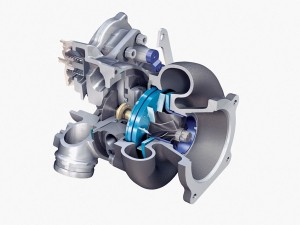
A turbocharger utilizes a single-stage radial-flow or “centrifugal” compressor (air pump), as seen on the left of this cutaway from Borg-Warner.
New Turbo Technology
Two-stage turbos are now being used in some European engine applications. The twin-turbo setup uses a small turbo for low RPM boost, and a larger secondary turbo to deliver increased airflow at higher engine speeds. Multi-stage turbos are also used on many large diesel engines to boost power.
Although it doesn’t affect production vehicles, advances in racing technology often filter down to everyday production engines.
For the 2014 racing season, rule changes in Formula 1 racing now require teams to use downsized turbocharged 1.6L V6 engines instead of the previous naturally aspirated 2.4L engines. The new turbo engines use less fuel and produce around 600 hp, which is less than the 750 hp produced by the larger naturally-aspirated engines.
The difference in power is made up by using an electronic energy storage system that can deliver an extra burst of power (about 80 hp) for a short period of time, keeping overall performance about the same as before.
The energy storage system uses the exhaust side of the turbo like a generator to recover and store energy during deceleration and at high RPM when the turbo generates more power than the engine needs. The energy is stored in a battery/capacitor setup. When the driver hits the accelerator pedal, the energy storage system discharges and spins up the compressor side of the turbo to create instant boost pressure. Another difference is that the new F1 turbos don’t use a wastegate to limit boost pressure. The energy storage unit controls the speed of the turbo, speeding it up or slowing it down as needed to change boost pressure.
Several companies are also working on electrically-driven turbochargers, including “hybrid” turbos similar to those used on the F1 race cars, as well as electrically-driven centrifugal superchargers that provide boost pressure without using exhaust flow or a belt drive to spin the compressor wheel.
As we move forward with more and more turbo engines, the opportunities to rebuild and modify these engines will continue to grow. Some see this as a niche opportunity for engine builders who specialize in turbos, while others see it as an expanding market opportunity for shops that have to service any kind of engine that comes in the door.
The post Turbochargers: Small Engine Performance Future appeared first on Engine Builder Magazine.
Read more here: Engine Builder Magazine
Samsung is designing a VR headset to use with Android games
In 2012, Oculus VR breathed new life in the virtual reality scene with the Oculus Rift, a far cry from the gimmicky technology of the past few decades. After flooring audiences at trade shows, the Oculus team launched one of the most successful Kickstarter campaigns of all time. Scrambling to catch up, several other tech companies announced their intention to enter the market as well, and now Samsung is adding its name to that list. Engadget reports that Samsung is developing its own VR headset which it will reveal later this year.
Read more here: Boy Genius Report
Diesel Engine Oil & Filters
Diesel engines have been around since the dawn of the automotive era. Over the years, diesels have become the engine of choice for powering heavy-duty trucks, buses, agricultural vehicles, off-road equipment, hard-working pickup trucks and stationary generators.
More recently, diesels are competing against hybrid and plug-in electric powertrains as an alternative to gasoline engines in passenger cars. The numbers are still relatively small in the U.S. with only about 800,000 passenger cars currently powered by a diesel engine.
But those numbers are expected to grow significantly in the years ahead – especially if fuel prices continue to rise and auto makers offer diesel-options in more makes and models.
By comparison, there are about 6 million diesel-powered light trucks registered in the U.S. and over 2 million diesel-powered heavy-duty trucks.
New clean diesel technology has drastically reduced emissions and now accounts for over 28% of all trucks registered in the U.S., according to R.L. Polk. Introduced in 2007 to comply with new government regulations, clean diesel engines are now found in nearly half a million heavy-duty trucks.
One of the changes that clean diesel technology brought with it was the need for higher-quality motor oils. The American Petroleum Institute (API) introduced the current CJ-4 oil standards back in 2006 so diesel motor oils would be compatible with 2007 model year engines equipped with exhaust gas recirculation (EGR), exhaust aftertreatment systems and designed to burn ultra-low sulfur (less than 15 ppm) diesel fuel. The higher operating temperatures and tougher emission requirements for clean diesel engines meant the oil had to provide better oxidation resistance, high temperature stability and soot control.
Diesel Oil Additives
One of the basic differences between oils formulated for diesel engines and those formulated for gasoline engines is more detergent and dispersant in the additive package.
Diesel engines (even clean diesels) still produce a lot of soot that ends up in the crankcase. If the oil can’t keep the soot in suspension, it can end up as sludge in the crankcase and elsewhere in the engine.
Diesel oils also contain a higher concentration of the anti-wear additive zinc-dialkyl-dithio-phosphate (ZDDP) to protect highly loaded sliding surfaces (like cam lobes and lifters) against wear.
The amount of ZDDP allowed in gasoline motor oils was cut back to 800 ppm in 2005 to help extend the life of the catalytic converter, but was allowed to remain at 1200 ppm in diesel motor oils.
The actual level of ZDDP in off-the-shelf diesel oils may vary from as low as 1000 ppm to as high as 1600 ppm according to various lab tests that have been performed by independent sources. That’s because the anti-wear properties of the oil depend, not only on the amount of ZDDP in the oil, but also other additives in the oil and the quality of the base oil itself.
The shift to low ZDDP gasoline motor oils in the market caused a sharp rise in flat tappet cam failures, especially in engines with stiffer than stock valve springs. Cam failure was not an issue in engines with roller cams because the rollers reduced friction on the cam lobes.
This lead many engine builders to recommend using diesel oil in gasoline engines if the engine had a flat tappet, high-lift performance cam and high-pressure valve springs.
The extra ZDDP in the diesel oil provided the extra protection needed to prevent the cam from failing. Today, we have numerous “racing oils” and “street performance oils” that are formulated with higher concentrations of ZDDP to protect flat tappet cams, as well as aftermarket ZDDP crankcase additives that can be used to fortify current gasoline oils in engines with flat tappet cams.
Diesel Oil Requirements
In addition to the API oil quality requirements, every OE engine supplier and vehicle manufacturer has its own oil specifications and viscosity recommendations. These include Allison, Caterpillar, Cummins, Detroit Diesel, Deutz, GM, Ford, Mack, Mercedes-Benz, Navistar, Volkswagen, Volvo and others. The specifications can vary depending on the model year and engine application. GM, for example, introduced its “dexos” specifications several years ago, and says that oils that meet its dexos2 specification should be used in its 2011 and newer diesel engines.
Oil Viscosity
For many years, 15W-40 had been the most common viscosity for diesel motor oils used in trucks. It provides a good high temperature protection and can be formulated from conventional base stocks or synthetics.
But, one of the drawbacks of a 15W-40 oil is that it makes the engine harder to crank when the engine is cold, so a thinner viscosity may be recommended for winter use in cold climates.
In recent years, a number of oil companies have introduced thinner 5W-40 diesel oils – not only for cold weather operation, but also for year-round use. Most of the 5W-40 diesel oils are a synthetic-blend or a full synthetic to achieve the cold flow characteristics needed for easy starting. Other cold weather diesel oils include 0W-30, which is formulated for subzero arctic-type conditions.
One of the benefits of using thinner oil is improved fuel economy. Thinner oils reduce drag and can help boost fuel economy from 1 to 3%. Switching a big over-the-road truck from a traditional 15W-40 oil to a full synthetic 5W-40 can produce significant fuel savings over time.
Of course, one of the tradeoffs of using a thinner full synthetic is its high initial cost, which can be up to two times or more than a conventional or blended motor oil.
Passenger car diesel applications are typically using thinner viscosity oils. The 2014 Chevy Cruze 2.0L turbo diesel is factory-filled with a dexos2 5W-30 motor oil. Many of the European turbo diesel powered cars also recommend 5W-30 as well as 5W-40 and 10W-40.
New Diesel Oil Standards & Viscosities
As of this writing, the target date for the introduction of a new set of API diesel oil standards is set for April 2016, almost 10 years after the last upgrade in oil standards. In the past, the main driving force in upgrading oil performance standards was emissions compliance. Today, the driving force is fuel economy and reducing carbon emissions.
API is still finalizing what exactly the new requirements and test procedures will be for what will likely be two new diesel oil ratings: one to replace the current CJ-4 standard (which will be backwards compatible for current CJ-4 applications), and a second oil standard (as yet unnamed) that will apply to 2016 and forward next generation diesel engines.
What they want is a new thinner viscosity oil that can provide better fuel economy while withstanding even higher operating temperatures with no sacrifice in durability, oxidation resistance, wear resistance and shear stability.
API is still developing the tests these new oils will have to pass in order to meet the new levels of performance. The current test procedure for determining oil viscosity is to heat an oil sample to 100 degrees C and measure how fast it flows through a calibrated orifice.
The test for the new 2016 diesel engine oil may involve heating the oil to 150 degrees C to measure its viscosity. Additional tests may include scuffing resistance, shear stability, oxidation stability and how well the oil can handle aeration.
There was also discussion as to whether or not a new test might be needed for compatibility with biodiesel fuels, but the consensus now is that biodiesel compatibility is not an issue now that biodiesel fuel quality has improved.
For now, the two new oil standards are code named PC11A for the oil that will replace the current CJ-4 oils, and PC11B for the next generation 2016 and forward engines. There may even be a new viscosity rating to help differentiate the PC11B oil from current viscosities that are on the market. According to one oil company, oils that meet the new PC11B requirements will likely have a high temperature viscosity rating around 26 (slightly lower than a traditional 30 weight), resulting in blends such as 5W-26 or 10W-26. The PC11B oils may be a blend of conventional and synthetic oil or full synthetic. It’s also likely that the new PC11B oil may NOT be backwards compatible with current or older diesel engines (that will be up to the diesel engine manufacturers to decide on a case by case basis). It may be okay to use PC11B oils in some 2007 and newer engines, or it may not. This may present some challenges for truck fleets that operate a mix of newer and older engines. Most fleets prefer to use a single grade and viscosity motor oil in all of its engines, but that may not be possible depending on what engine changes appear in 2016.
Future oil compatibility issues may seem to be far removed from engine builders who are overhauling older, high-mileage diesel engines. But as technology continues to evolve and move forward, we need to keep abreast of changes that eventually affect all aspects of engine building.
Diesel Break-In Oils
Engine break-in is a critical process that can make or break an engine. Using a high-quality engine assembly lube on all sliding surfaces as the engine goes together, and priming the oil system prior to the initial start-up are absolute musts for proper break-in protection. But what type of break-in oil should you use?
John Deere recommends using its special diesel break-in oil in John Deere engines. In fact, John Deere ships all of its new and remanufactured engines with break-in oil in the crankcase. John Deere’s “Plus-50 II” break-in oil (which is available in 15W-40 and 10W-30 viscosities) should only be used for the first 100 hours of engine operation. Once the engine is broken in, the oil should be drained and replaced with regular oil (conventional, synthetic blend or full synthetic).
Most other diesel engine manufacturers make no specific break-in oil recommendation, and say to use the same oil that would normally be used in the engine (usually a conventional 15W-40 oil). This oil can be used until the engine is fully broken in (which may not be until the first normally scheduled oil change interval or up to 10,000 miles), or it can be changed after a certain time or mileage period (which will vary depending on the application).
A number of oil suppliers have special break-in oils that can be used in gasoline or diesel engines. These products can be single weight or multi-viscosity and are usually formulated with a conventional mineral oil base stock and a special additive package that promotes rapid ring seating. Many break-in oils also contain higher levels of ZDDP for extra wear protection. Most break-in oils should only be used during the initial break-in process (1 to 2 hours), then drained and replaced with ordinary oil.
Oil Change Intervals
Vehicle manufacturers have been pushing extended service intervals to reduce maintenance costs for fleets and consumers. Fleets often base oil change intervals on the results of oil analysis, but most consumers either go by the OEM recommended service intervals or rely on an oil reminder service light to tell them when an oil change is needed.
On late model light trucks, 7,500 miles is the standard recommended oil change intervals for GM Duramax, Ford Powerstroke and Dodge Cummins turbo diesel engines. However, this is for “normal” (light duty) service. The recommended oil change interval for most “Severe Service” applications (vehicles that are used for towing, hauling heavy loads, operated off-road in dusty environments or spend a lot of time idling, especially during cold weather) is usually 3,000 miles. Most of these engines hold 10 to 12 quarts of oil, so changing the oil unnecessarily wastes money. Stretching the oil change intervals to reduce costs is fine provided a high-quality oil (such as a synthetic blend or full synthetic) is used along with OEM quality oil filtration.
With heavy-duty trucks, oil change intervals also depend on use. For light-duty over-the-road hauling, some OEMs say the oil can go 40,000 to 50,000 miles before a change is needed. As with the light pickup trucks, extended oil change intervals require a high-quality oil and good filtration. For harder use applications, the recommended service interval typically drops to 15,000 to 25,000 miles. Many of these engines hold up to 40 quarts or more of oil, so when the oil is changed it does have a significant impact on operating costs as well as engine durability and longevity.
Oil Filtration
Because diesel engines produce a lot of soot and combustion byproducts that end up in the crankcase, good filtration is needed to protect the engine from these contaminants. The oil filters on diesel engines are typically much larger and have a higher holding capacity than those on gasoline engines. Many heavy-duty trucks have used two separate oil filters: a full flow filter and a bypass filter to help assure good filtration under all operating conditions. Newer diesel oil filter designs often combine full flow and bypass features into a single filter. Combination filters typically have a wrap-around pleated full flow media inside with stacked disc bypass media at the top or bottom.
Full flow filters (or the full flow portion of a combination filter) typically trap debris 30 microns or larger, while bypass filters (or the bypass portion of a combination filter) capture contaminants down to 10 microns in size. Some combination filters can even trap particles as small as 5 microns. Smaller particles can actually cause more engine wear over time than larger particles.
Approximately 75% of the contaminants trapped by the oil filter are combustion byproducts (soot and sludge) rather than engine wear particles or dust or dirt from the outside environment.
The filter’s holding capacity (how much dirt it can hold) as well as its efficiency are important because both determine how long the filter can last before it has to be changed. You want a filter with high efficiency (98% or higher) to trap as many contaminants as possible, but you also want a filter that has adequate capacity so it doesn’t plug up before it is changed. If the filter media becomes clogged to the point where the filter goes into bypass mode, the engine will be running on unfiltered oil.
When an engine is being started for the first time, the oil filter should be prefilled with oil to minimize the time it takes the engine to develop normal oil pressure. The filter should also be changed every time the oil is changed, not every other time to reduce the risk of filter clogging.
Another tip that can prevent engine warranty claims or problems down the road is if the engine has an external oil cooler, the lines and/or cooler should be inspected and cleaned to make sure there are no contaminants lurking inside that could cause problems. Any junk in the oil cooler can pass right through to the engine’s main oil gallery that feeds the main bearings, cam bearings and timing gears.
The post Diesel Engine Oil & Filters appeared first on Engine Builder Magazine.
Read more here: Engine Builder Magazine






